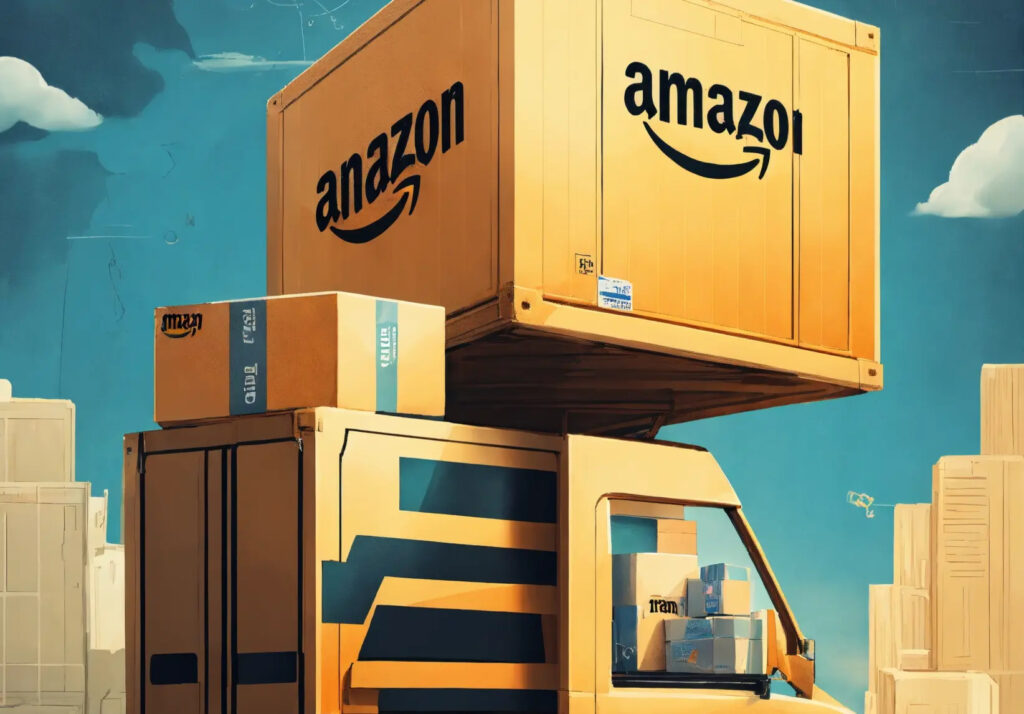Amazon has emerged as one of the most powerful companies globally, reshaping not only e-commerce but also sectors like cloud computing, entertainment, and artificial intelligence. As the dominant force in online retail, Amazon’s journey from a modest online bookstore to the largest internet-based company is both fascinating and revolutionary. In this article, we will explore the profound influence Amazon has had on industries worldwide, examining its core strategies, product and service offerings, and how it has positioned itself Amazon’s Humble Beginnings: A Vision for the Future
Amazon was founded by Jeff Bezos in 1994, starting as a digital bookstore in his garage in Seattle. Bezos saw the potential of the internet as a platform for commerce at a time when most people had only begun exploring its capabilities. His vision was simple yet ambitious: to create an online store that could sell anything.
Initially, Amazon specialized in books, capitalizing on the ease of shipping them compared to other goods. However, as demand grew and technology improved, Amazon expanded its offerings to include everything from electronics to clothing, groceries, and beyond. By 1997, Amazon had gone public, and its sales were booming. Bezos continued to reinvest profits back into the company, focusing on logistics infrastructure and technology to support rapid growth.
The turning point came when Amazon introduced its third-party marketplace in 2000, which allowed independent sellers to list their products on Amazon’s platform. This move expanded Amazon’s product offerings exponentially and was a critical factor in its transition from an online bookstore to a comprehensive marketplace. Today, Amazon offers millions of products across countless categories, and its presence continues to grow worldwide.
Amazon’s Customer-Centric Approach

One of the core reasons for Amazon’s success is its unwavering focus on customer satisfaction. Jeff Bezos famously stated that Amazon aims to be “the most customer-centric company in the world.” This philosophy underpins nearly every decision the company makes, from product recommendations based on data algorithms to seamless returns policies and the introduction of same-day delivery in many regions.
Personalization is a key element of Amazon’s approach. Its website utilizes sophisticated algorithms that track user behavior to offer personalized recommendations, increasing the likelihood of additional purchases. Furthermore, Amazon’s easy-to-use interface and streamlined checkout process have set a new standard for online shopping.
Customer reviews and ratings are also integral to Amazon’s model. The company encourages users to share their feedback on products, creating a transparent ecosystem where shoppers can make informed decisions. This focus on user experience has fostered a sense of trust among consumers, contributing to Amazon’s unrivaled brand loyalty.
The Power of Amazon Prime
Amazon Prime, launched in 2005, has been a game-changer in the world of e-commerce. For an annual subscription fee, Prime members receive a variety of perks, including free two-day shipping, access to Amazon Prime Video, and exclusive discounts. Amazon Prime is more than just a shipping service; it’s a multi-faceted membership program that has created a highly loyal customer base.
Prime members tend to spend more on Amazon than non-members, thanks to the convenience and perks associated with the program. Additionally, the success of Prime has led Amazon to expand its logistics capabilities, including developing its own delivery network. This initiative has given Amazon greater control over shipping times and costs, further enhancing the overall shopping experience.
Today, Amazon Prime boasts over 200 million subscribers globally, a testament to its success as a tool for increasing customer retention and revenue growth.
Amazon Web Services (AWS): The Hidden Giant

While many recognize Amazon as an online retailer, its most profitable division is Amazon Web Services (AWS). AWS was launched in 2006 and provides cloud computing services to businesses, government agencies, and individuals. Offering a range of services, from data storage to machine learning capabilities, AWS has become a foundational infrastructure provider for countless organizations, including Netflix, Airbnb, and NASA.
AWS has enabled businesses to scale their operations without investing in costly physical infrastructure. By providing on-demand computing power and data storage through a pay-as-you-go model, AWS has revolutionized the IT landscape.
Today, AWS holds a dominant share in the cloud computing market, and its revenue growth continues to outpace Amazon’s retail segment. AWS generates billions in profit annually, giving Amazon the financial muscle to fund other ventures and innovations. This division is not just a significant revenue stream but also a driving force behind Amazon’s continued expansion into artificial intelligence, big data, and IoT technologies.
Revolutionizing Logistics with Fulfillment by Amazon (FBA)
The introduction of Fulfillment by Amazon (FBA) has had a profound impact on global logistics. Through FBA, third-party sellers can store their products in Amazon’s warehouses, allowing Amazon to manage shipping, returns, and customer service on their behalf. This program enables small and medium-sized businesses to tap into Amazon’s vast logistics network, giving them access to millions of potential customers without needing their own warehousing or shipping capabilities.
Amazon’s logistics network is a marvel of modern supply chain management, supported by an extensive system of fulfillment centers, sorting facilities, and last-mile delivery services. In fact, Amazon has even begun experimenting with drone delivery and robotics to further streamline its operations and reduce delivery times.
By continuously investing in automation and data analytics, Amazon has revolutionized the logistics industry, setting new standards for speed and efficiency. This infrastructure has given Amazon a significant competitive advantage, allowing it to offer fast shipping at scale, a feature that many consumers have come to expect.
Beyond E-Commerce: Amazon’s Expanding Influence

While e-commerce remains Amazon’s core business, the company has diversified into numerous sectors, each of which plays a role in shaping the future of technology and entertainment.
Amazon Prime Video
Amazon Prime Video has quickly risen as one of the major players in the streaming wars, alongside Netflix and Disney+. With its growing library of original content, including hit series like The Marvelous Mrs. Maisel, The Boys, and Jack Ryan, Prime Video has positioned itself as a key competitor in the digital entertainment space. The platform offers a mix of licensed content, live sports, and exclusive originals, making it a major selling point for Amazon Prime memberships.
Amazon Alexa and Smart Home Devices
Amazon’s foray into the smart home market with its Alexa-enabled Echo devices has made it a leader in voice-controlled technology. Alexa’s integration into Amazon’s ecosystem allows users to shop, control home appliances, and access information hands-free, all while interacting with Amazon’s services.
The success of Alexa and Echo devices has placed Amazon at the forefront of the Internet of Things (IoT) revolution, making the company a dominant player in the emerging smart home market.
Amazon Go and Physical Retail
Amazon’s innovation extends beyond the digital realm, with ventures like Amazon Go, a series of convenience stores that offer a checkout-free experience. Utilizing artificial intelligence and sensor technology, Amazon Go allows customers to walk in, grab items, and leave, with purchases automatically charged to their Amazon account. This innovation could potentially reshape the future of retail by eliminating long checkout lines and streamlining the shopping experience.
Moreover, Amazon’s acquisition of Whole Foods Market in 2017 has expanded its footprint in the grocery industry, further merging its online and physical retail strategies. The acquisition not only provided Amazon access to a well-established brand but also allowed it to experiment with online grocery delivery, integrating it into the broader Amazon Fresh platform.
Amazon’s Focus on Innovation and the Future
Amazon’s drive for continuous innovation remains one of its most compelling attributes. The company invests billions in research and development, exploring emerging technologies like artificial intelligence, automation, and machine learning to refine its services and create new ones.
Amazon’s ambitious vision includes a focus on sustainability, with initiatives like The Climate Pledge, aiming to achieve net-zero carbon emissions by 2040. This commitment involves investing in renewable energy, electric delivery vehicles, and eco-friendly packaging practices.
As Amazon continues to shape the future of industries from e-commerce to cloud computing, it remains poised to maintain its position as one of the most innovative and disruptive companies in the world.
eBay: The Ultimate Guide to Buying and Selling Online